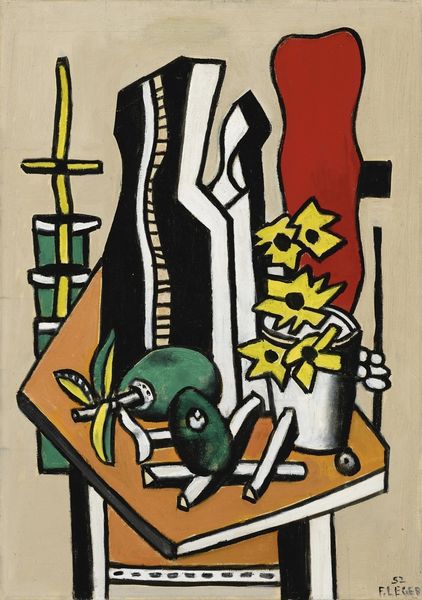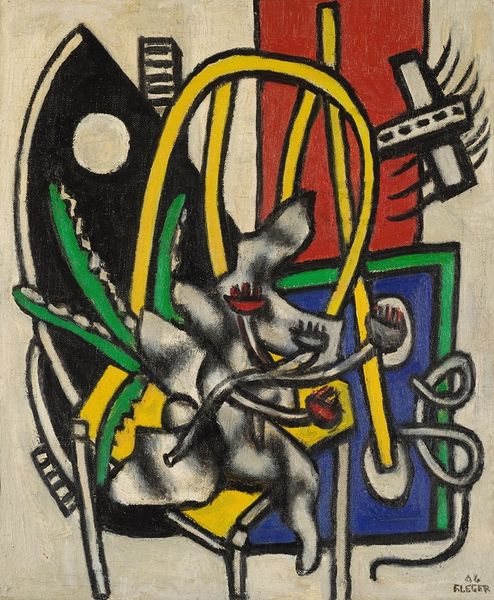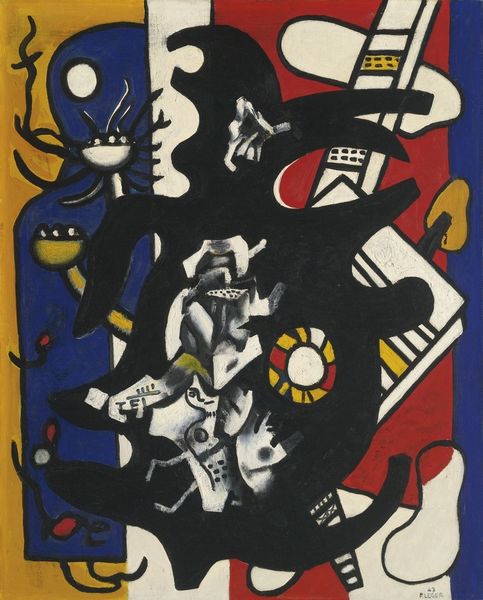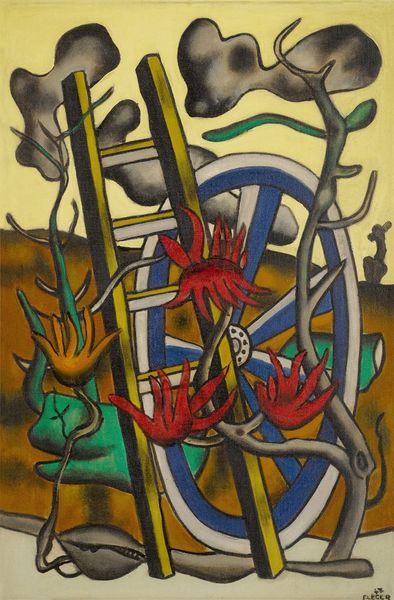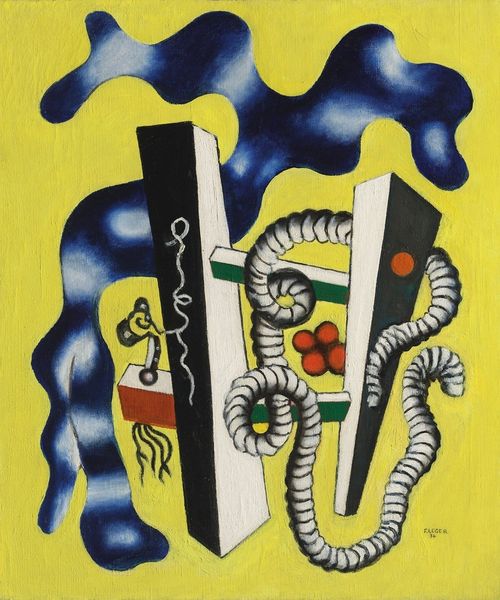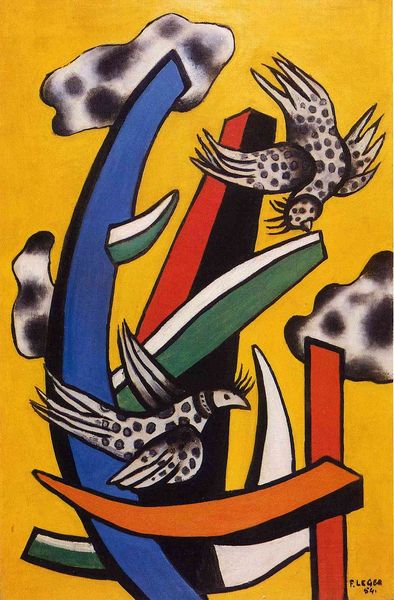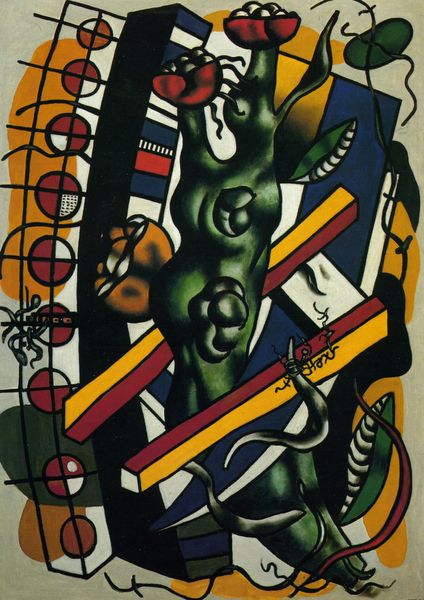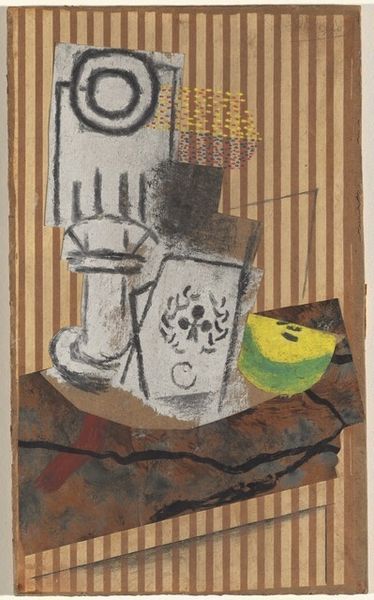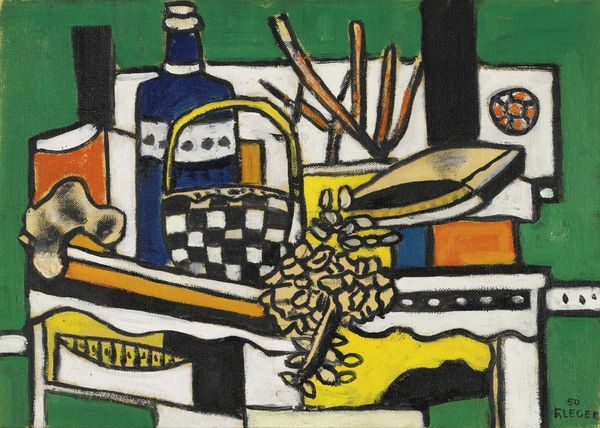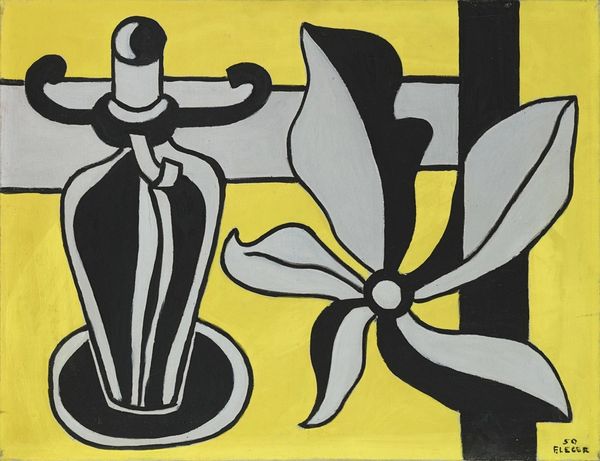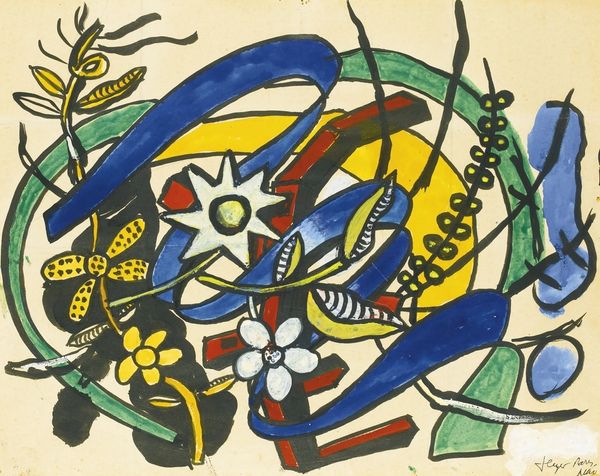
Copyright: Modern Artists: Artvee
Curator: Fernand Léger's "Le Vase jaune," painted in 1946, presents a captivating arrangement of forms and colors. Editor: My immediate impression is one of controlled chaos—the angular shapes and vibrant hues create a strangely unsettling yet compelling composition. Curator: Precisely. Léger’s engagement with Cubist principles is evident in the fractured and reassembled objects. Note how he reduces the vase, and other objects, to their essential geometric forms: cylinders, rectangles, and curves. The palette is carefully structured as well, playing ochre yellows off against plum and cooler greens, all tethered by sharp blacks and whites. Editor: The symbolic resonance is fascinating too. I'm drawn to the juxtaposition of the hard-edged geometry with what appears to be an animal skull, or maybe a distorted carapace. This tension could reflect the artist's experience with the brutality of war countered with a sense of modernity symbolized by industrial objects and flat colors. Curator: A valid reading, but consider the plastic quality of the surface, achieved through confident lines. It’s a formal strategy designed to generate specific tensions. By flattening pictorial space, Léger pushes the image towards abstraction and enhances its visual impact. Note, also, his choice to place lettering within the field: text is used to contribute formal weight. Editor: Yes, and perhaps, the letters are the abstracted echoes of the labels from bottles. Perhaps memories, filtered, categorized. The fractured skull acts like an ancestral memory; its flat shapes mirror the color blocked lettering. Léger is creating a symbolic link between generations through a common visual language. Curator: And consider that the flatness creates an experience. I appreciate how the bold outlines force our eye to decipher relationships between the elements within. The interlocked pieces show the visual dynamics between each shape in turn, a sophisticated play with visual balance. Editor: Well, whether intended or not, the lasting cultural echoes remain, reminding us how art transforms common experience into enduring myth. Curator: I would concur that it remains a sophisticated manipulation of shape, surface and color—even with the mythical components in the reading.
Comments
No comments
Be the first to comment and join the conversation on the ultimate creative platform.

